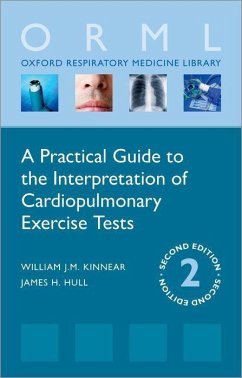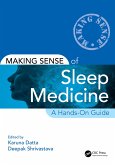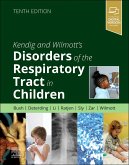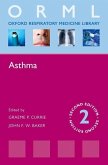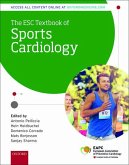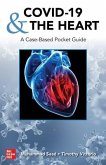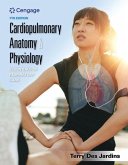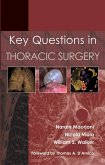William Kinnear (Consultant Respi Consultant Respiratory Physician, James H. Hull (Consultant Respira Consultant Respiratory Physician
A Practical Guide to the Interpretation of Cardiopulmonary Exercise Tests
William Kinnear (Consultant Respi Consultant Respiratory Physician, James H. Hull (Consultant Respira Consultant Respiratory Physician
A Practical Guide to the Interpretation of Cardiopulmonary Exercise Tests
- Broschiertes Buch
- Merkliste
- Auf die Merkliste
- Bewerten Bewerten
- Teilen
- Produkt teilen
- Produkterinnerung
- Produkterinnerung
Part of the Oxford Respiratory Medicine Library (ORML) series, A Practical Guide to the Interpretation of Cardiopulmonary Exercise Tests, Second Edition provides readers with a practical, concise, and accessible approach to all aspects of cardiopulmonary exercise tests (CPET).
Andere Kunden interessierten sich auch für
![Making Sense of Sleep Medicine Making Sense of Sleep Medicine]() Making Sense of Sleep Medicine67,99 €
Making Sense of Sleep Medicine67,99 €![Kendig and Wilmott's Disorders of the Respiratory Tract in Children Kendig and Wilmott's Disorders of the Respiratory Tract in Children]() Kendig and Wilmott's Disorders of the Respiratory Tract in Children338,99 €
Kendig and Wilmott's Disorders of the Respiratory Tract in Children338,99 €![Asthma Asthma]() Graeme CurrieAsthma58,99 €
Graeme CurrieAsthma58,99 €![The Esc Textbook of Sports Cardiology The Esc Textbook of Sports Cardiology]() The Esc Textbook of Sports Cardiology185,99 €
The Esc Textbook of Sports Cardiology185,99 €![Covid-19 and the Heart: A Case-Based Pocket Guide Covid-19 and the Heart: A Case-Based Pocket Guide]() Muhammad SaadCovid-19 and the Heart: A Case-Based Pocket Guide46,99 €
Muhammad SaadCovid-19 and the Heart: A Case-Based Pocket Guide46,99 €![Cardiopulmonary Anatomy & Physiology Cardiopulmonary Anatomy & Physiology]() Terry Des Jardins (Parkland College, Champaign, Illinois)Cardiopulmonary Anatomy & Physiology101,99 €
Terry Des Jardins (Parkland College, Champaign, Illinois)Cardiopulmonary Anatomy & Physiology101,99 €![Key Questions in Thoracic Surgery Key Questions in Thoracic Surgery]() Dr Narain MoorjaniKey Questions in Thoracic Surgery93,99 €
Dr Narain MoorjaniKey Questions in Thoracic Surgery93,99 €-
-
-
Part of the Oxford Respiratory Medicine Library (ORML) series, A Practical Guide to the Interpretation of Cardiopulmonary Exercise Tests, Second Edition provides readers with a practical, concise, and accessible approach to all aspects of cardiopulmonary exercise tests (CPET).
Hinweis: Dieser Artikel kann nur an eine deutsche Lieferadresse ausgeliefert werden.
Hinweis: Dieser Artikel kann nur an eine deutsche Lieferadresse ausgeliefert werden.
Produktdetails
- Produktdetails
- Oxford Respiratory Medicine Library
- Verlag: Oxford University Press
- 2 Revised edition
- Seitenzahl: 240
- Erscheinungstermin: 28. März 2021
- Englisch
- Abmessung: 217mm x 141mm x 17mm
- Gewicht: 310g
- ISBN-13: 9780198834397
- ISBN-10: 019883439X
- Artikelnr.: 60715214
- Herstellerkennzeichnung
- Libri GmbH
- Europaallee 1
- 36244 Bad Hersfeld
- gpsr@libri.de
- Oxford Respiratory Medicine Library
- Verlag: Oxford University Press
- 2 Revised edition
- Seitenzahl: 240
- Erscheinungstermin: 28. März 2021
- Englisch
- Abmessung: 217mm x 141mm x 17mm
- Gewicht: 310g
- ISBN-13: 9780198834397
- ISBN-10: 019883439X
- Artikelnr.: 60715214
- Herstellerkennzeichnung
- Libri GmbH
- Europaallee 1
- 36244 Bad Hersfeld
- gpsr@libri.de
William Kinnear is a Consultant Respiratory Physician at Circle Nottingham, Nottingham NHS Treatment Centre, Queen's Medical Centre Campus, Nottingham, UK and a Senior Lecturer in Sport Science at Nottingham Trent University. He studied at University College London and Westminster Hospital Medical School. He trained at the Brompton Hospital in London, Papworth Hospital and Addenbrooke's Hospital in Cambridge before moving to Nottingham. A Wellcome scholarship enabled him to spend a year at Erasmus Hospital in Brussels, developing his interest in respiratory muscle physiology. He worked as a consultant respiratory physician at the Queens Medical Centre in Nottingham for 25 years, setting up the regional non-invasive ventilation and sleep services. He introduced cardio-pulmonary exercise testing in the lung function laboratory and has published widely in the field of respiratory physiology. James H. Hull, PhD, FRCP, FACSM is a Consultant Respiratory Physician at the Royal Brompton Hospital, London, UK and Hon. Associate Professor at the Institute of Sport, Exercise and Health (ISEH), UCL, London. His interest in exercise testing started with an undergraduate degree in exercise physiology at St George's Hospital Medical School with Professor Brian Whipp. He later completed a PhD in vascular physiology and was then awarded a National Institute for Health Research Clinical Lectureship, during which he spent time at UCLA, California developing expertise in clinical exercise testing. He currently personally supervises over 250 CPET tests per year, as lead for the clinical unexplained breathlessness service at the Royal Brompton.
Abbreviations
SECTION 1 INTRODUCTION
1: Why do a CPET?
2: Pre-test assessment
3: Supervising a CPET
4: How to do a CPET
SECTION 2 KEY CPET PARAMETERS
5: Oxygen uptake
6: Heart rate
7: Oxygen-pulse
8: Ventilation
9: Carbon dioxide output
10: Respiratory exchange ratio
11: Ventilatory equivalents
12: Anaerobic threshold
13: Respiratory compensation point
14: Oxygen saturation
15: Additional respiratory measurements
SECTION 3 USING CPET DATA
16: Presentation of results
17: Interpretative strategy
18: Clinical scenarios
19: Pre-operative testing
20: Exercise prescription
APPENDICES
Learning point questions
List of learning points
Practical tip questions
List of practical tips
Example exam questions
Glossary
Bibliography
Index
SECTION 1 INTRODUCTION
1: Why do a CPET?
2: Pre-test assessment
3: Supervising a CPET
4: How to do a CPET
SECTION 2 KEY CPET PARAMETERS
5: Oxygen uptake
6: Heart rate
7: Oxygen-pulse
8: Ventilation
9: Carbon dioxide output
10: Respiratory exchange ratio
11: Ventilatory equivalents
12: Anaerobic threshold
13: Respiratory compensation point
14: Oxygen saturation
15: Additional respiratory measurements
SECTION 3 USING CPET DATA
16: Presentation of results
17: Interpretative strategy
18: Clinical scenarios
19: Pre-operative testing
20: Exercise prescription
APPENDICES
Learning point questions
List of learning points
Practical tip questions
List of practical tips
Example exam questions
Glossary
Bibliography
Index
Abbreviations
SECTION 1 INTRODUCTION
1: Why do a CPET?
2: Pre-test assessment
3: Supervising a CPET
4: How to do a CPET
SECTION 2 KEY CPET PARAMETERS
5: Oxygen uptake
6: Heart rate
7: Oxygen-pulse
8: Ventilation
9: Carbon dioxide output
10: Respiratory exchange ratio
11: Ventilatory equivalents
12: Anaerobic threshold
13: Respiratory compensation point
14: Oxygen saturation
15: Additional respiratory measurements
SECTION 3 USING CPET DATA
16: Presentation of results
17: Interpretative strategy
18: Clinical scenarios
19: Pre-operative testing
20: Exercise prescription
APPENDICES
Learning point questions
List of learning points
Practical tip questions
List of practical tips
Example exam questions
Glossary
Bibliography
Index
SECTION 1 INTRODUCTION
1: Why do a CPET?
2: Pre-test assessment
3: Supervising a CPET
4: How to do a CPET
SECTION 2 KEY CPET PARAMETERS
5: Oxygen uptake
6: Heart rate
7: Oxygen-pulse
8: Ventilation
9: Carbon dioxide output
10: Respiratory exchange ratio
11: Ventilatory equivalents
12: Anaerobic threshold
13: Respiratory compensation point
14: Oxygen saturation
15: Additional respiratory measurements
SECTION 3 USING CPET DATA
16: Presentation of results
17: Interpretative strategy
18: Clinical scenarios
19: Pre-operative testing
20: Exercise prescription
APPENDICES
Learning point questions
List of learning points
Practical tip questions
List of practical tips
Example exam questions
Glossary
Bibliography
Index

